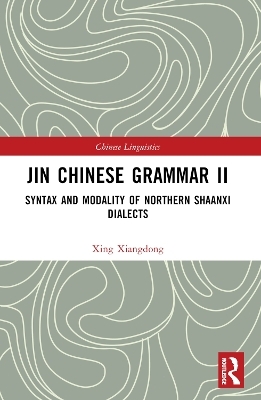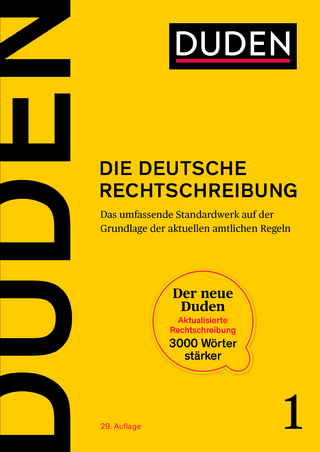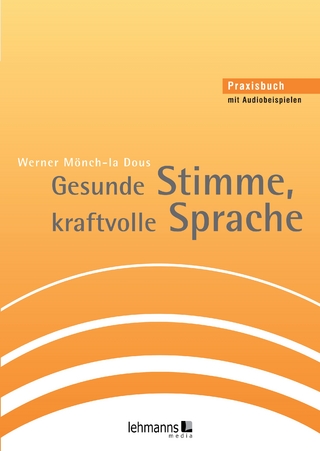
Jin Chinese Grammar II
Syntax and Modality of Northern Shaanxi Dialects
Seiten
2024
Routledge (Verlag)
978-1-032-35776-8 (ISBN)
Routledge (Verlag)
978-1-032-35776-8 (ISBN)
This book is the second volume of a two-volume set that synchronically and diachronically studies the Jin dialect in Northern Shaanxi Province in China, with a focus on six grammatical features of the dialect.
This book is the second volume of a two-volume set that synchronically and diachronically studies the Jin dialect of Northern Shaanxi Province in China, with a focus on six grammatical features of the dialect.
The Jin dialect of Northern Shaanxi is one of the most ancient, complicated, and representative dialects of the Yellow River region and figures prominently in our understanding of the Jin dialect and northern Chinese dialects as a whole. The book looks into the following six aspects of the dialect: subjunctive mood, expressions of complex sentence relationships, embedded sentence patterns, complex interrogative sentences, the formation of imperative modal particle “zhe”, and the phonetic variation of grammatical constituents. In the final chapter, the author discusses the significance of diachronic comparison as the research method for studying Chinese dialectal grammar.
The book will be a useful reference for scholars and students interested in Jin dialects, Chinese dialects, and Chinese linguistics.
This book is the second volume of a two-volume set that synchronically and diachronically studies the Jin dialect of Northern Shaanxi Province in China, with a focus on six grammatical features of the dialect.
The Jin dialect of Northern Shaanxi is one of the most ancient, complicated, and representative dialects of the Yellow River region and figures prominently in our understanding of the Jin dialect and northern Chinese dialects as a whole. The book looks into the following six aspects of the dialect: subjunctive mood, expressions of complex sentence relationships, embedded sentence patterns, complex interrogative sentences, the formation of imperative modal particle “zhe”, and the phonetic variation of grammatical constituents. In the final chapter, the author discusses the significance of diachronic comparison as the research method for studying Chinese dialectal grammar.
The book will be a useful reference for scholars and students interested in Jin dialects, Chinese dialects, and Chinese linguistics.
Xing Xiangdong is a professor in the College of Arts at Shaanxi Normal University, China. His research and work focus on Chinese dialects, especially dialects of Northwestern China.
1. Subjunctive Mood 2. Means of Expressions of Complex Sentence Relationships 3. Embedded Sentence Patterns: Ba-construction combined with Jiao-construction 4. A-not-A Questions 5. The Formation of Imperative Modal Particle “Zhe” in Modern Chinese Dialects 6. Sound Variation of Grammatical Constituents 7. Strengthening Diachronic Comparative Study on Chinese Dialectal Grammar
| Erscheinungsdatum | 05.10.2022 |
|---|---|
| Reihe/Serie | Chinese Linguistics |
| Zusatzinfo | 11 Tables, black and white |
| Verlagsort | London |
| Sprache | englisch |
| Maße | 156 x 234 mm |
| Gewicht | 430 g |
| Themenwelt | Schulbuch / Wörterbuch ► Wörterbuch / Fremdsprachen |
| Geisteswissenschaften ► Sprach- / Literaturwissenschaft ► Sprachwissenschaft | |
| Naturwissenschaften ► Physik / Astronomie | |
| ISBN-10 | 1-032-35776-2 / 1032357762 |
| ISBN-13 | 978-1-032-35776-8 / 9781032357768 |
| Zustand | Neuware |
| Informationen gemäß Produktsicherheitsverordnung (GPSR) | |
| Haben Sie eine Frage zum Produkt? |
Mehr entdecken
aus dem Bereich
aus dem Bereich
Das umfassende Standardwerk auf der Grundlage der aktuellen amtlichen …
Buch | Hardcover (2024)
Duden (Cornelsen Verlag)
35,00 €
und wie man sie vermeidet
Buch | Softcover (2022)
C.H.Beck (Verlag)
14,00 €


